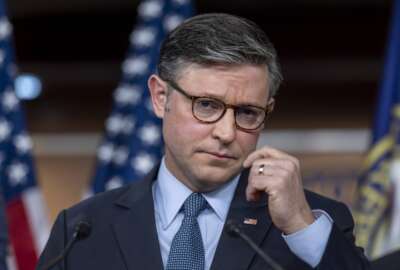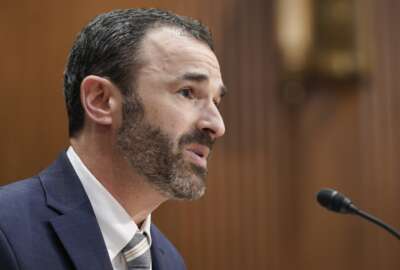How contractors, agencies can leverage year end spending
Some federal agencies might be gearing up for year-end spending sprees, which means contractors should look out. Ray Bjorklund of FedSources tells the...
wfedstaff | June 3, 2015 12:24 pm
With only weeks left in the federal government’s fiscal year and more than $114 billion left to spend, will the government be going on an end of the year spending spree?
Ray Bjorklund is the senior vice president and chief knowledge officer at FedSources. He has been combing over the numbers for weeks and has complied it all in a new report.
He says the end of the year spending rush isn’t unusual, but there are certain aspects of the process that both contractors and agencies need to take into consideration.
“There are so many complex processes that both the agencies and the contractors have to comply with to really understand what it means for ‘x’ number of dollars to be available. I can pull a dollar bill out of my pocket and say ‘What am I going to spend this on tomorrow? I don’t know,’ . . . but, the way that the government is structured with all of the thousands of pages of appropriations law . . . there are lots of different steps and stages you have to go through to use the money correctly by the end of the fiscal year.”
There are also rules governing how money can expire or transfer over into the next fiscal year.
And while rules and regulations are nice, he does add that much of the money that the federal government deals with does carry a “use it or lose it” policy, which has given agencies a bad rap.
“Unfortunately it creates a culture, which is consistent with the law, [that] if you don’t spend that money, somebody may come by and take it away from you. Certainly for the succeeding years, you may not get as much as you had planned.”
There have been some positives, though. Bjorklund says some agencies have been forced into out-of-the-box thinking when it comes to justifying their budgets before Congress.
For contractors, however, there are a few things to keep in mind.
“A lot of the end of the year purchases tend to be commodity based, and it might be even a small study — ‘I need to conduct a small study by the end of the fiscal year, because I need some planning for the next fiscal year’. Things that are small and incremental. Computing equipment, for instance.”
Agencies might start planning for the end of the fiscal year in August, but Bjorklund says contractors should start thinking about it around March or April.
“[They need to work] with their customers to align the business plans of the government and the opportunity chasing of the contractor to line them together, so for the bigger types of jobs that might be multi-million dollars that you could take advantage of this end of the year spending because you have been developing acquisition plans in synchronization with the government over that period of time.”
It’s all about making sure the contractor and agency are on the same page, he adds. Contractors also need to be sensitive to the fact that this is a busy time for agencies and that the acquisition workforce sometimes struggles.
“Contractors need to be sensitive to what those customers go through {and} the fact that there aren’t enough people in the acquisition workforce that can do these orders quickly with low risk, {and} to recognize that there are all these funding complexities you have to deal with, understand those processes, and then ultimately work with your customers so that you can be in synchronization with each other.”
Email the author of this post at dramienski@federalnewsradio.com
Copyright © 2025 Federal News Network. All rights reserved. This website is not intended for users located within the European Economic Area.





